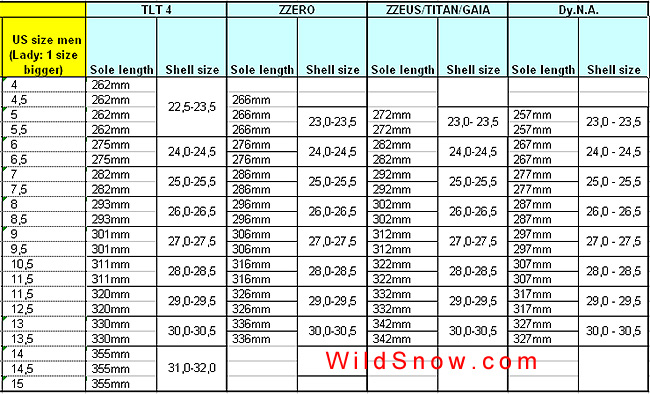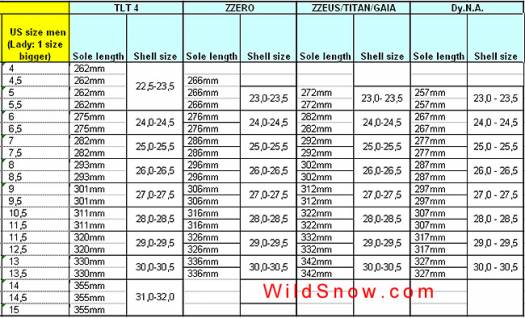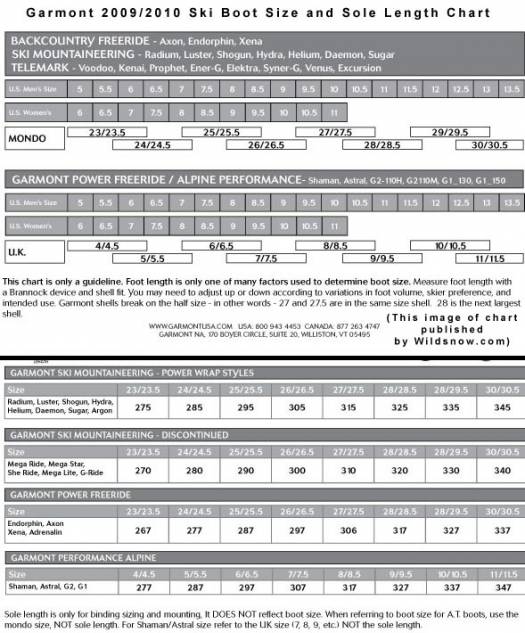DIY instructions for doing your thermo-moldable boot liners.
We have dozens of ski boot fitting articles, check them out!
There are quite a few boot sizing charts floating around the web. Here are a few to get you started. Main purpose of this is to help you decide on a shell size when you’re “between sizes,” by knowing at what size point the shell gets smaller. This is especially useful when mail ordering boots (though we recommend buying boots from a retailer with boot fitting services.) When it comes to rating boots as being “wide” or “narrow,” we defer to BootFitters.com

Black Diamond boot sizes.
Sidebar, with help from Paul Parker: When comparing boot shell weights, do so by discerning what shell actually fits your foot, rather than looking at BSL (Boot Sole Length) numbers.
All boot shells have a number stamped inside the lower shell (scafo in Italian) such as “28.5.” This number is the boot’s Mondo Point Size. Shell cuffs and tongues often span two lower shell sizes so they may not reflect the exact size — it is important to look inside the scafo. That number in the scafo in virtually all cases will be the length of the inside of a complete boot. This is the number you need to compare one boot shell to another in terms of what will fit your foot. For example, if you fit a 28.5 scaffo in one brand, you’ll likely find that the same Mondo fits you in another brand.
The BSL, or BOOT SOLE LENGTH, is printed on the outside of the boot and is often mistaken for size. Most manufacturers also put a sticker on the outside of the boot that shows actual MPS size.
Scott ski touring and ski mountaineering boots 2014-1015, along with Cosmos includes various models For boot fitting, here are the Scott shell breaks. This won’t change much going forward so is probably fine for 2015-2017.
Celeste, Nova and other women’s backcountry skiing boots:
23.0-23.5, 24.0-24.5, 25.0-25.5, 26.0-26.5, 27.0-27.5Cosmos, Orbit and other men’s boots:
25.0-25.5, 26.0-26.5, 27.0-27.5. 28.0-28.5, 29.0-29.0, 30.0-30.5, 31.0-31.5



